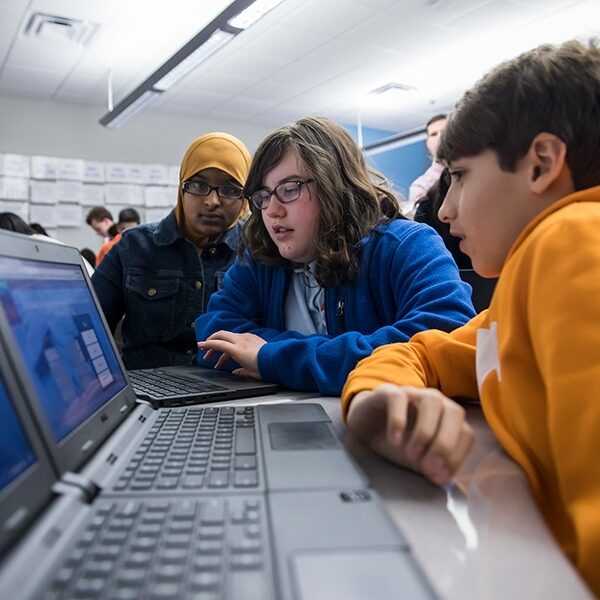
The call to teach digital citizenship has been heard by schools around the world, yet there are a few schools who question the value, purpose, and position of teaching digital citizenship within the classroom. Many of those questions stem from a lack of understanding around what digital citizenship is, why it is important, and how it should be taught to children. While students may know how to operate a technology device, they do not always know how to use it responsibly, nor understand the importance of doing so.
To me, allowing children to operate a computer without proper guidance is the same as allowing them to operate a car. Children learn how to operate computers and cars from watching television, observing adults, and playing video games. Each device in the hands of a child can be dangerous to that child and the others around them without proper guidance. The difference between a computer and a car in the hands of a child is that the danger of a car is obvious to everyone, while the danger of a computer is hard to perceive. Yet, the damage caused by a child on a computer as seen in incidents around cyberbullying and school violence can be even more devastating and may follow that child for the rest of their lives.
In my research to understand and persuade colleagues, I learned a great deal about the importance of teaching digital citizenship and the impact it can have on future generations.
Focus on what digital citizenship can do.
Digital citizenship is a recognizable term that is practiced in and outside of schools. One misconception is that “digital citizenship only teaches students not to share their passwords or talk to online strangers.” This is not entirely true. Teaching skills around password safety and stranger awareness, while important, is only a small part of teaching digital citizenship.
When explaining what digital citizenship really is, it is more important to focus on what it will allow students to do. Rather than summarize it as a “set of skills” or “lessons to teach,” one should consider digital citizenship a demonstration of responsible and appropriate behavioral thinking that enables students to express their opinions (whether or not others may agree with them), communicate with others, and discern truths from false information. It provides students with the capability to make positive choices that will allow them to be successful in their futures.
Focus on digital citizenship importance in preparing students for their future.
Many educators struggle to prioritize teaching digital citizenship to their students. Some educators question the need to teach this topic, the roles of schools and parents in this process, and appropriateness for grade level.
Teaching digital citizenship prepares students to navigate a technology-driven future where their interactions through online platforms and social media will influence their success in society. Preparing students to succeed in their future endeavors is our primary goal as educators. While it is not easily measured, these skills will be valuable in securing students in higher education, the job market, and entrepreneurship. An article in Inside Higher Ed reported on a college admissions study performed by Kaplan Test Prep that revealed 68% of colleges consider looking at an applicant’s social media profile as an option to decide whether to accept their application (Jaschick, 2018). Several articles illustrate the need for schools to teach students positive online behavior early, even before they start leaving a digital footprint that could harm them later.
As the saying goes, it takes a village to raise a child. Schools and parents need to partner together to teach students about digital citizenship. Schools have a responsibility to teach this concept in order to get the most out of their blended and personalized learning strategies. As education partners, parents should be also be educated on the basics of digital citizenship and supported in continuing lessons at home. Schools should begin teaching students positive online behaviors as early as kindergarten. This is important, especially now, as schools increase students’ access to technology use throughout the school day. Teaching digital citizenship guides students, especially younger children, on how to build a safe and positive online community at their school and in their homes. It helps build their judgment around choices that may lead to disrupting instructional time, hurting classmates, or placing themselves in an inappropriate situation.
Focus on using small moments to teach digital citizenship.
As ISTE CEO Richard Culatta shared in his session at SXSW EDU, “Digital citizenship is not about teaching curriculum — it’s about creating a culture.” Teaching digital citizenship does not have to be a difficult task for educators – there are many resources available for schools. Here are some of the highly used and highly rated resources available:
Resources
- Common Sense Media (Grades K-12): Free lessons, videos, online games, and project-based activities
- NetSmartz (Ages 5-17): Free, age-appropriate resources to help teach children how to be safer online and offline, created by the educational program of the National Center for Missing and Exploited Children
- Nearpod (Grades K-12): Fee-based lessons, activities, and assessments
- Google: Interland (Ages 7-12): Free lessons, activities, and interactive online games
- ISTE (Grades K-12): Free online resources for teachers on how to teach digital citizenship to students
These resources come fully scripted with lessons, project-based activities, and online games where students can apply their understanding using real-life scenarios. While many experts agree that the best way for students to learn these skills is through project-based methods, digital citizenship can be taught in small moments throughout the instructional day. Educators should use every opportunity to reiterate and model good online behavior and reward students who exhibit positive habits. These skills require constant practice and reiteration, just like general social behavior skills.
Whether you agree or disagree with its definition or implementation, digital citizenship is a necessity for the development and growth of students today. As educators, we need to let go of our hesitation around teaching digital citizenship, embrace it as a necessary skill in preparing our students for a successful future, and focus on our mission to guide our students in improving the world where we live.

